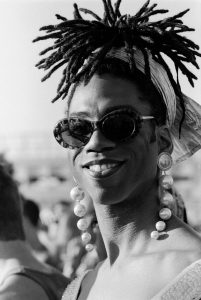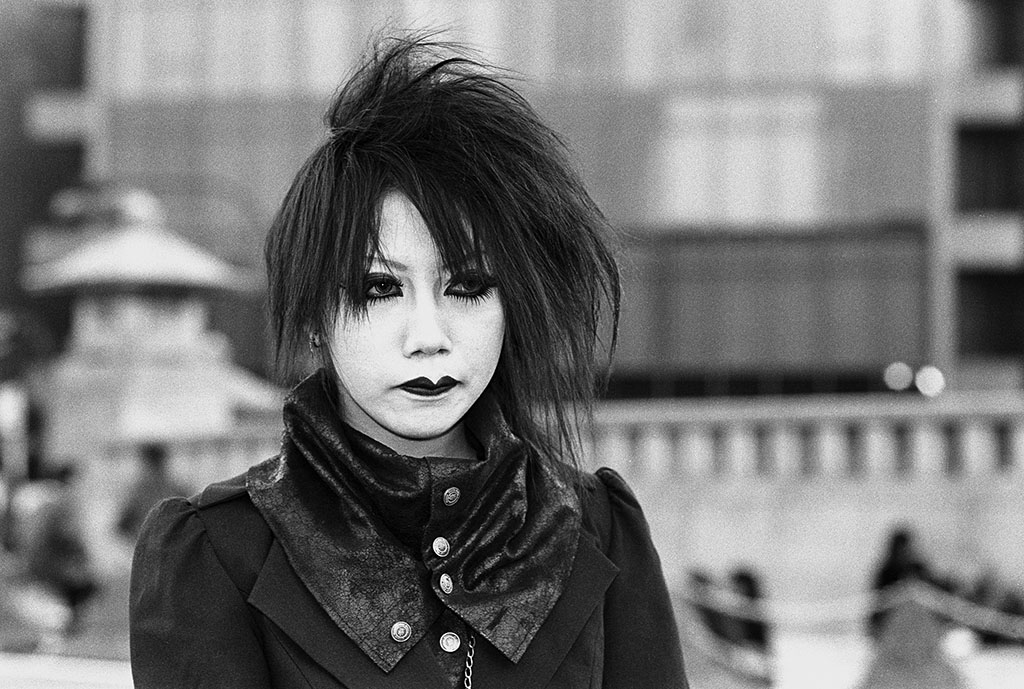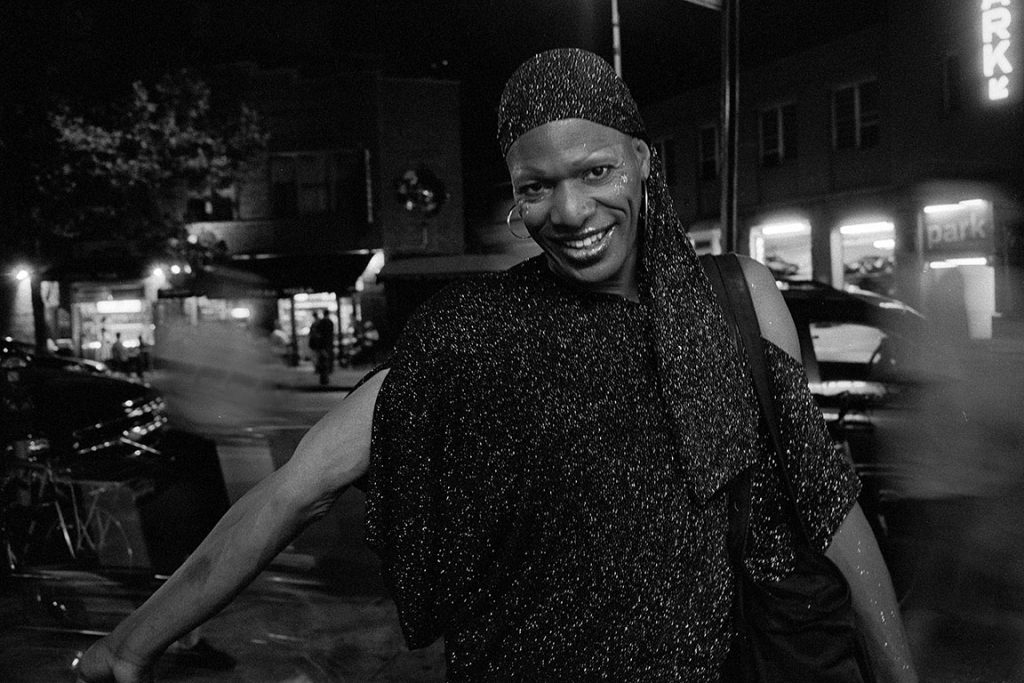This is a “retro” episode of The Monochrome Chronicles. More concisely, a mostly retro episode. The theme goes back to my time in NYC, with a few images from Tokyo.
The concept of alternative identity is difficult to explain in words, and photography may be a better medium to show what I mean. Identity itself is a fluid construct, difficult to define. Alternative identity, then, would seem to be more difficult to define. Not so. I have come across alternative identities in various milieux, as will become evident in the photographs. I should like to claim that it is easier to recognize an alternative identity, and capture it on film – easier, that is, than to recognize someone’s identity. Therein lies a conundrum. When I’m behind the camera I see only an intriguing subject for a portrait. Recognition of the alternative identity comes only later, often in the darkroom or thereafter. To resolve this conundrum I defer to my little inner voice, which is more perceptive, more sensitive than I am myself. Such is my long-winded explanation for the street photographer’s dictum: shoot first and think later. Such displays of alternative identity intrigue me, for what reason I don’t know. The outcome is this series “Alternative Identities.”

This is Iggy, for me the epitome of alternative identity. I need to justify that statement. Chance encounters with Iggy over several years at Wigstock in NYC, as well as at the Easter Parade, gave me a deeper impression of Iggy’s alternative identity. We never spoke. She seemed to glide through the crowd, never speaking to anyone, presumably part of her alternative identity. Glamour, poise, elegance, fashion-plate, cool, aloof – all these words come to mind when describing Iggy, but her alternative identity as what drew my camera like a magnet.
Mere words fail to describe my reaction to this street portrait from Tokyo’s Gay Pride event. I guess I’ve painted myself into a corner with that sentence. The beauty in this image is haunting, almost unreal. Without doubt, the make-up, the bleached hair, the tiara and the tinted contact lenses contribute to the aura – but something else defines the alternative identity. Maybe that something else is pride, the self assurance of having created this identity, a spirit that goes deeper than the external beauty. My first impulse was correct: words fail me here. Maybe the hand gesture is what sets the image apart.



This guy especially draws me into the image. His eyes are compelling, challenging. His identity is composed of two distinct elements. The wig, the eye make-up, the ear rings are distinctly fem (in a traditional sense). His moustache and goatee are distinctly masculine. His grin, accentuated by dimples, and a gleam in his eyes express his challenge.

In this image, traditionally masculine and traditionally feminine features meld together seamlessly to create a new, alternative identity.


An enigma hides behind this persona. Beauty resides here. But that beauty is external. The gown, the diaphanous headwear and the bleached hair contribute to the enigma. I’m tempted to say that, for me, part of the enigma is the cross-cultural barrier. All these factors contribute to the strength of this street portrait of someone at Tokyo’s Gay Pride event.













Simone, Simone, Simone. She radiates a certain something. That “something” is difficult to put into words. In the context of my photographic series, I suspect that this image shows not her alternative identity but rather her true identity. Possibly an alternative identity lurks somewhere, but this is her public persona. The photograph comes from the briefest of encounters on the street near my apartment in NYC. In a sense, Simone and my camera shared an instant attraction. I was almost a bystander. We exchanged a few words and then she was gone.
The topic for this episode of The Monochrome Chronicles is my series “Alternative Identities,” which for the most part might be deemed serious fun. Alternative identities is an elusive concept with many levels. For me, the first brush with alternative identities came after I moved to NYC. My first few years in the city pelted me with so many eye-popping experiences. This was in the late 1970s, not so very long after the Stonewall Rebellion in 1969. My introduction to the world of what was then called “drag” came later. That world remained on the periphery for me until after I took up black-and-white photography and started going to Wigstock, which by then had moved from its origin in Thompson Square Park in the East Village to the West Village piers, coincidentally near where I lived.
I suppose I had an approach-avoidance conflict about “drag” at the time. I saw drag queens as “them,” apart from my milieu. Once my camera urged me to take in Wigstock one year, though, my point of view changed. In time I moved past the stereotype of the outrageous drag queen, and I discovered a much deeper element – which eventually became “alternative identity.”
Now my series “Alternative Identities” is a closed book. In its wake, I could become more free in street photography. And it was a stepping stone to my subsequent work in portraiture.
In the context of The Monochrome Chronicles, this episode about alternative identities comes close to the end of the series. This episode and the previous one – Male Nudes – have a common subtheme. Both focus mainly on my early experience with black-and-white photography back in NYC. More importantly, though, these are deeply personal photographs. They come from somewhere deep inside. Someone once described a photographer’s first public exhibition as being like standing naked on Main Street of your hometown at noon. How true. I have the same feeling about these three final episodes.
As I wrote in the introduction, I believe that these photographs express what I mean about alternative identity better than I could express with words. I feel a special attraction to, and respect for, these subjects. That said, I must admit that all these have been brief, anonymous encounters. A double selection bias is at work here. When I’m on the street, my camera sometimes manages to focus on a single subject in a crowd, or maybe the attraction comes from the subject. From the opposite viewpoint, my role is to find that one frame of film that expresses the moment of communication. The world inside my view finder.